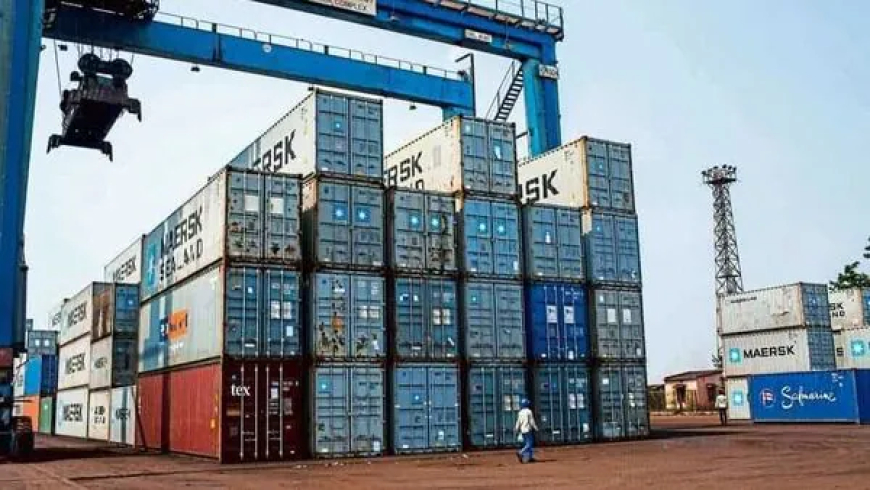India Sets Bold Export Targets for 2025: Piyush Goyal Eyes Record Highs Amid Global Trade Deals
Union Minister Piyush Goyal reveals India’s ambitious export targets for 2025, boosted by new trade agreements and rising sectoral output.

By Ronald Kapper
Published: July 6, 2025
New Delhi – India is charting an ambitious course to break its export records in the 2025-26 fiscal year, buoyed by a wave of recently signed free trade agreements (FTAs) and a renewed global focus on diversified supply chains. Union Minister of Commerce and Industry, Piyush Goyal, signaled on Friday that the country could see “historic highs” in outbound trade, as the government aggressively pursues new partnerships and market expansion.
Speaking at the Confederation of Indian Industry (CII) Trade and Commerce Conclave in Mumbai, Goyal highlighted the strategic direction India is taking to position itself as a reliable, high-quality global manufacturing hub. The minister emphasized that India’s export momentum is being strengthened by bilateral agreements with major economies and a robust performance across key sectors such as pharmaceuticals, electronics, engineering goods, and textiles.
“Our goal is to build a sustainable and resilient export ecosystem. With the support of our industry, workforce, and global partners, I believe we are on the threshold of an unprecedented export growth story,” Goyal said during the keynote address.
Export Numbers Signal Strong Trajectory
According to data from the Ministry of Commerce, India’s merchandise exports crossed $778 billion in FY 2024-25, showing a steady recovery from global trade disruptions in the previous years. Service exports also touched a record high of $387 billion, driven by IT, fintech, and professional services.
Goyal hinted that the government is targeting over $900 billion in total exports for the current financial year—an ambitious figure that would make India one of the fastest-growing export economies globally.
The growth is not just driven by volume but also by value-added manufacturing, aligning with the "Make in India" and PLI (Production Linked Incentive) schemes. These programs have attracted billions in foreign investment and are making Indian goods more competitive in international markets.
Free Trade Agreements: A Strategic Push
One of the central pillars of India’s export strategy has been the signing of comprehensive FTAs with nations like Australia, the United Arab Emirates, Canada, and now progressing talks with the European Union and the UK.
These agreements have eliminated or reduced tariffs across hundreds of product lines, providing a major advantage to Indian exporters. Notably, the India-UAE Comprehensive Economic Partnership Agreement (CEPA) has already led to a 40% jump in trade between the two nations within a year of implementation.
In his address, Goyal remarked, “Our FTAs are not just diplomatic tools—they are economic weapons. They help our MSMEs, our startups, and our large industries to thrive in competitive markets.”
He also urged Indian businesses to adopt global quality standards and invest in supply chain digitization to take full advantage of the new trade landscapes.
Sectors Driving Export Growth
India’s export growth is being led by multiple dynamic sectors:
-
Pharmaceuticals: With India known as the "Pharmacy of the World", generic drug exports continue to see robust demand in Africa, the U.S., and Latin America.
-
Electronics and Semiconductors: Under the Semicon India initiative, the country is now becoming a manufacturing hub for mobile components and chipsets.
-
Textiles and Apparel: With European markets gradually shifting from China, Indian garment manufacturers are seeing a resurgence in orders.
-
Engineering Goods: Precision components, auto parts, and industrial machinery are finding strong demand in South-East Asia and the Middle East.
Challenges and Road Ahead
Despite the optimism, India faces hurdles that could slow down progress if not managed proactively. Logistics bottlenecks, port infrastructure issues, and high domestic interest rates remain challenges. Additionally, trade protectionism in some western markets poses a risk.
Economists suggest that digital infrastructure, trade facilitation, and export financing reforms are key to sustaining momentum.
Dr. Swati Bhandarkar, senior trade economist at NCAER, noted:
“India is well positioned, but global competition is intense. Speed of execution on ground-level policy implementation will make the real difference between target and achievement.”
Export Ecosystem Set for Transformation
The government has announced a roadmap to revamp export-related schemes and support mechanisms. The introduction of Districts as Export Hubs aims to unlock local production potential, while the National Logistics Policy is expected to cut logistics costs from 13% to 8% of GDP, making Indian exports more competitive.
Moreover, platforms like ICEGATE (Indian Customs EDI Gateway) and DGFT's e-commerce portal are digitizing the export process to reduce turnaround time for exporters.
Conclusion
As India sets its sights on a record-breaking export year, the momentum generated by strategic trade agreements, economic reforms, and strong sectoral performance is undeniable. Union Minister Piyush Goyal’s confident outlook is backed by tangible policies and expanding global opportunities. However, translating potential into performance will require seamless coordination between industry, infrastructure, and international diplomacy.
If current trends continue, India may soon emerge as one of the world's top export powerhouses—not just in volume, but in global trust and value.














